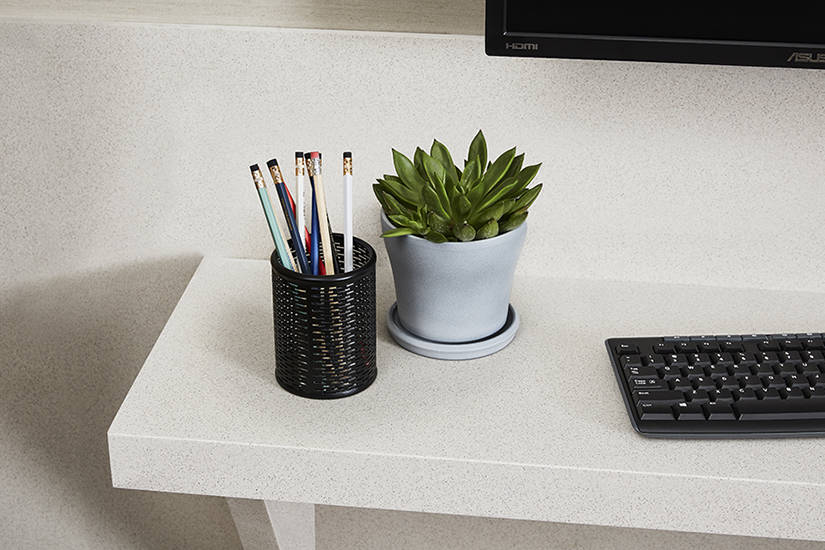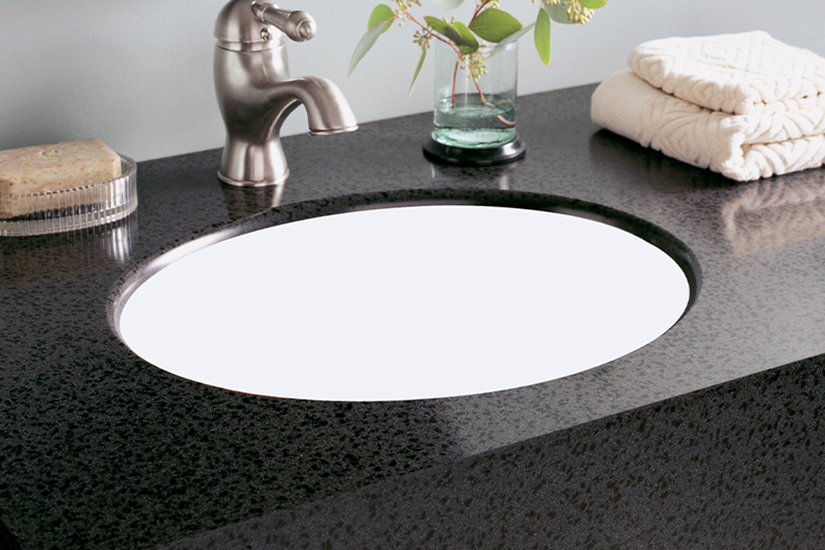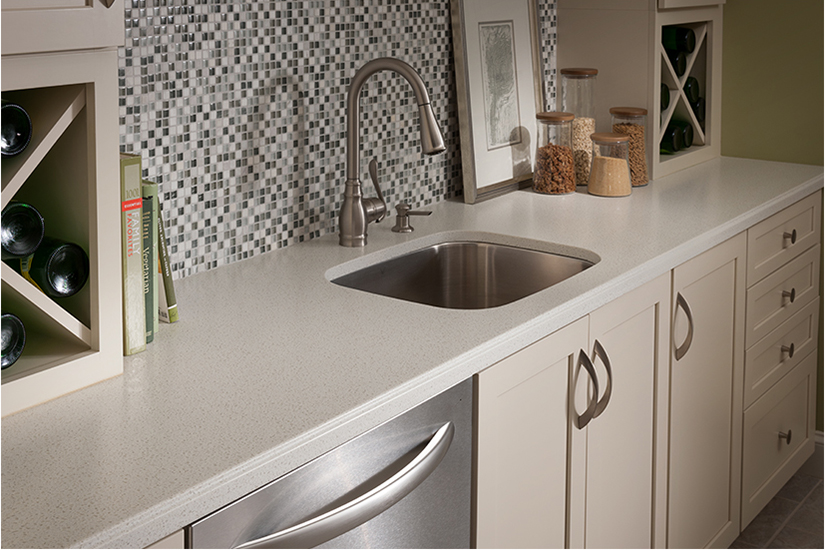Solid Surfacing 101
Solid Surfacing 101
Chances are you associate the word “Formica” with laminate but did you know that Formica Group specializes in solid surfacing countertops as well?

What is Solid Surfacing?
You may be wondering, “What does ‘solid surfacing’ mean?” Let’s find out.
In basic terms, solid surfacing is a slab of durable, hard plastic that is the same color all the way through (compared to laminate, which is not). It’s used to make kitchen countertops, bathroom vanity tops and other work surfaces like bars and laundry room tables.
In not-so-basic terms, solid surfacing is created from a natural mineral fiber called aluminium trihydrate (ATH), plus binding resins and pigments for color. The resins might be made of acrylic, polyester or acrylic-modified polyester, depending on the particular product.
What’s So Great About It?
The great thing about solid surfacing for countertops is that when installed, the seams are invisible – which not only looks beautiful, but doesn’t have any gaps or grout for yucky germs to live in.
Solid surfacing comes in many colours and designs, including the look of natural stone – without the expense and upkeep of natural stone!
The nature of solid surfacing material also allows for some fantastic design options, like integrated sinks and backsplashes. In addition, solid surfacing can be carved like stone so your countertop can have unique edging or inlays. Read on for more details.

Integrated Sinks
Solid surfacing is the ONLY material that allows you to have an integrated sink. This means the sink is made of the same material as the countertops. The two are fused together as one unit, leaving no gaps. Voila: No place for water to collect and no place for bacteria to hide.
Note that an integrated sink is not the same as an undermount sink, but they can look similar.
Integrated Backsplashes
With solid surfacing, you can also have an integrated backsplash. This means the solid surfacing is extended up the wall for a seamless look.
Customization
Because the color goes all the way through, solid surfacing can be customized for lots of looks that will make your countertop one of a kind. As with granite or other stone surfaces, professionals can carve your solid surfacing countertop to achieve a number of stylish edging options – like bevel, ogee, bullnose and other variations.
Professionals can also inlay other materials, like tile or even other colours of solid surfacing, into your solid surfacing countertop to give it a custom look.

What About Maintenance?
Solid surfacing countertops are non-porous. That means they never require sealing (unlike granite and many other natural materials) to keep them bacteria- and stain-resistant.
Solid surfacing is very durable, but we know life happens. If you forget to use a cutting board to dice your onions, you can buff it back to health with a little elbow grease.
Affordability
Solid surfacing is more expensive than laminate and slightly more affordable than high-quality granite. You can also expect to pay more for special edging and inlays.
Intrigued?
Everform™ Solid Surface comes in many colours and patterns. For even more looks, consider mixing solid surface countertops with laminate.
View our complete collection of Everform™ Solid Surface.



